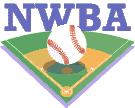In the current training era it’s widely accepted that mobility is a critical part of good training. Athletes must have access to appropriate ranges of motion in order to facilitate safe, fluid motion to occur. Yet, most people either totally neglect their mobility work of half heartedly go through a few stretches before their workout. The old adage: “well lions don’t stretch before they chase gazelles” makes sense conceptually and for a very small percentage of athletes it may hold water. However, lions don’t have to go to work, sit at desks or sit in traffic. They don’t have to take tests, they don’t have to pay bills, and they don’t spend hours playing Fortnite and perusing Instagram. My point is: our “go-go-go” world and excessive time immobile can often be the culprit behind aberrant movement or mobility restrictions. Some of the best athletes in the world prioritize their mobility and movement quality over all else. Baseball is a rotational sport that also requires overhead motion. In order to be both healthy and effective with these movements, it is of paramount importance that adequate ranges of motion are available. Here are three (of many) key areas that baseball players need to be mobile.
1. The thoracic spine. This is often referred to as the “t-spine” and is made of the 12 vertebrae in the middle of your back (T1-T-12). The anatomy of the thoracic spine is designed to be able to move. It should flex, extend, and rotate. The most common presentations from a postural standpoint are either too much extension or too much flexion. The goal, therefore, is to give the athlete more of what they don’t have. Drills like the bear, all 4’s belly lifts, and child’s poses are implemented to restore flexion to the system in athletes who are overly extended (think military “at attention” posture). This area should also be able to rotate. If this area is stiff and not moving efficiently, throwing and hitting mechanics will be adversely affected and compensatory movements will occur.
2. Shoulder mobility. In the past I’ve written about the demands of the throwing arm and some of the things we consider during assessment. (See that post here: http://www.nwgabaseball.org/snitz/topic.asp?TOPIC_ID=101300) The shoulder joint has the most degrees of freedom of all the joints in the body, meaning it should move in several different directions. If the shoulder joint cannot move efficiently, either overhead or from a rotational standpoint, things can start to go downhill for throwers. Additionally, the baseball player should have a high degree of control of the shoulder blade. Without good arm to shoulder blade rhythm, proper mechanics cannot occur. Especially in guys that throw hard! These are the types of issues that cause elbow and shoulder pain. Be sure to take your shoulder mobility and scapular control seriously!
3. The Hips/Hamstrings. Can you touch your toes? Can you keep your legs straight if you lie on your back? The hips are possibly the most important tools a baseball player can develop. They are the engine that creates power. However, in order for them to generate this torque, they must move well! They must be able to rotate well and move in several different directions. My favorite way to describe the importance of hamstrings flexibility and strength is the stride leg in pitchers. Pitchers who cannot straighten out the front leg and absorb the force tend to lose both velocity and control. This is because the energy traveling through the kinetic chain is “leaked” when the athlete cannot get himself or herself into the proper position!
In summary, get with your trainer to make sure your hips, your shoulders, and your thoracic spine have sufficient flexibility and control. Next week I will share some drills to address common issues.
We hope this is helpful! Have a great week, and as always feel free to comment with questions or topic requests!
All the best,
The Rapid Team
www.go-rapid.com
Andrew Gordon, MS, CSCS
Andrew.Gordon@go-rapid.com
|




